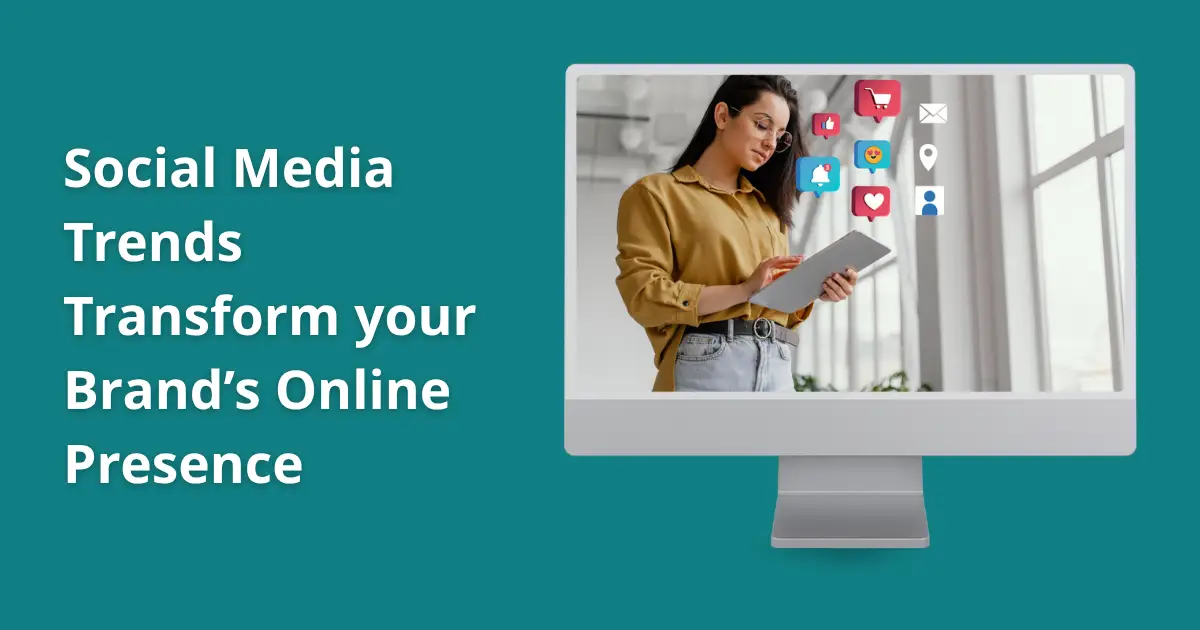Key Takeaways
-
Sound human. Speak like a person, not a corporation. Relatable voices build stronger connections.
-
Use AI to support your voice. Let AI enhance creativity, but keep your message personal and authentic.
-
Prioritize engaged communities over follower counts. Focus on meaningful interaction, not vanity metrics.
-
Share helpful content. Teach, inform, or solve a problem to earn long-term attention and trust.
-
Keep your message consistent. Align your story across all platforms to build brand clarity and credibility.
Social media isn’t just a marketing channel anymore. It’s the front line of brand perception, discovery, and trust. In 2025, social media drives brand trust, discovery, and perception. Brands that adapt to shifting trends will dominate the space.
Here’s what actually matters this year. No fluff. No hype. Just what works.
1. Short-form video isn’t optional anymore. It’s the standard.
If your brand isn’t producing short-form video by now, you’re invisible to half the internet. TikTok isn’t the only player. Instagram Reels, YouTube Shorts, and even LinkedIn videos are being pushed hard by algorithms. Why? Because users engage with video more than any other content type, and platforms know it.
What’s changed in 2025:
It’s not just Gen Z anymore. Everyone’s consuming short videos. B2B buyers, boomers, and everyday consumers alike. And the performance gap between video and static posts is only widening.
How to adapt:
Start thinking in 30-second value drops. Teach something. Entertain. Show behind-the-scenes. Drop a hot take. Don’t overproduce. Authentic, direct, and quick wins over polished and forgettable every time. If you’re not publishing at least one or two short-form videos a week, you’re not keeping up.
2. AI is flooding feeds. Authenticity is the only thing cutting through.
AI tools are everywhere. Anyone can auto-generate captions, posts, scripts, and carousels. But here’s the problem. It all sounds the same. And users are catching on fast. The copy-paste AI voice is turning into white noise.
What’s changed in 2025:
Audiences are craving content that feels personal and real. Brands that lean too hard on generic AI outputs are blending into the background.
How to adapt:
Use AI as your co-pilot, not your ghostwriter. Let it help with structure or polish, but make sure your real voice shines through. Share opinions. Tell honest stories. Be transparent about wins and struggles. The more human you sound, the more trust you build. In 2025, trust is the most valuable currency online.
3. Smaller, engaged communities beat big, passive audiences.
For years, brands chased follower counts like it was the only metric that mattered. But what good is 100,000 followers if only 50 of them care? In 2025, reach matters less than relevance. You’re better off being a big deal in a small corner of the internet than ignored on the main stage.
What’s changed in 2025:
People are moving away from broad, feed-based content to niche, interest-based communities. Private groups, Discord channels, Substacks, or even micro-influencer comments are where real engagement is happening.
How to adapt:
Get specific about who you’re for. Don’t try to be everything to everyone. Create content that speaks directly to your niche’s problems, values, and language. Build two-way conversations, not one-way broadcasts. Respond to comments. Ask questions. Make your followers feel like insiders, not spectators.
4. Social platforms are now search engines. Optimize accordingly.
In 2025, TikTok and Instagram are real competitors to Google. Especially for younger users. People are searching for everything from skincare routines to product reviews to how to start freelancing on social platforms first. If your content doesn’t show up there, you’re missing where people actually look for answers now.
What’s changed in 2025:
Visual-first search is on the rise. Instead of typing in a keyword and scanning blog posts, people are using hashtags, audio cues, and captions to discover content directly inside social apps.
How to adapt:
Think like an SEO, but for social. Use relevant keywords in your video captions, subtitles, and bios. Don’t get too clever with jargon. Use the exact phrases your audience is typing into the search bar. For example, “best productivity apps for freelancers” is more searchable than “my tech stack.” Also, post consistently on the same topics to build topical authority inside the algorithm.
5. Creators are the new media. Collaborate or get left behind.
The influencer economy has matured. Today’s creators aren’t just side hustlers. They’re their own brands, with loyal audiences and serious influence. The trust people place in them far outweighs what they place in ads or corporate accounts.
What’s changed in 2025:
Micro and mid-tier creators (1,000 to 100,000 followers) are driving real results. They’re seen as more relatable and trustworthy than mega-influencers or celebrities.
How to adapt:
Treat creators like strategic partners, not ad placements. Find voices that align with your brand’s values and aesthetics. Let them co-create content instead of scripting it for them. Invest in long-term relationships, not one-off promo posts. And don’t be afraid to feature creators in your own content. They bring built-in credibility and a new perspective your audience might respond to better.
Conclusion
This isn’t about jumping on the latest trend just to keep up. It’s about understanding how people are actually using social media in 2025 and meeting them there with something real, useful, and relevant.
Forget trying to go viral. Focus on showing up with purpose. Build trust. Offer value. Engage like a human. That’s how you’ll grow a brand that actually matters this year.
